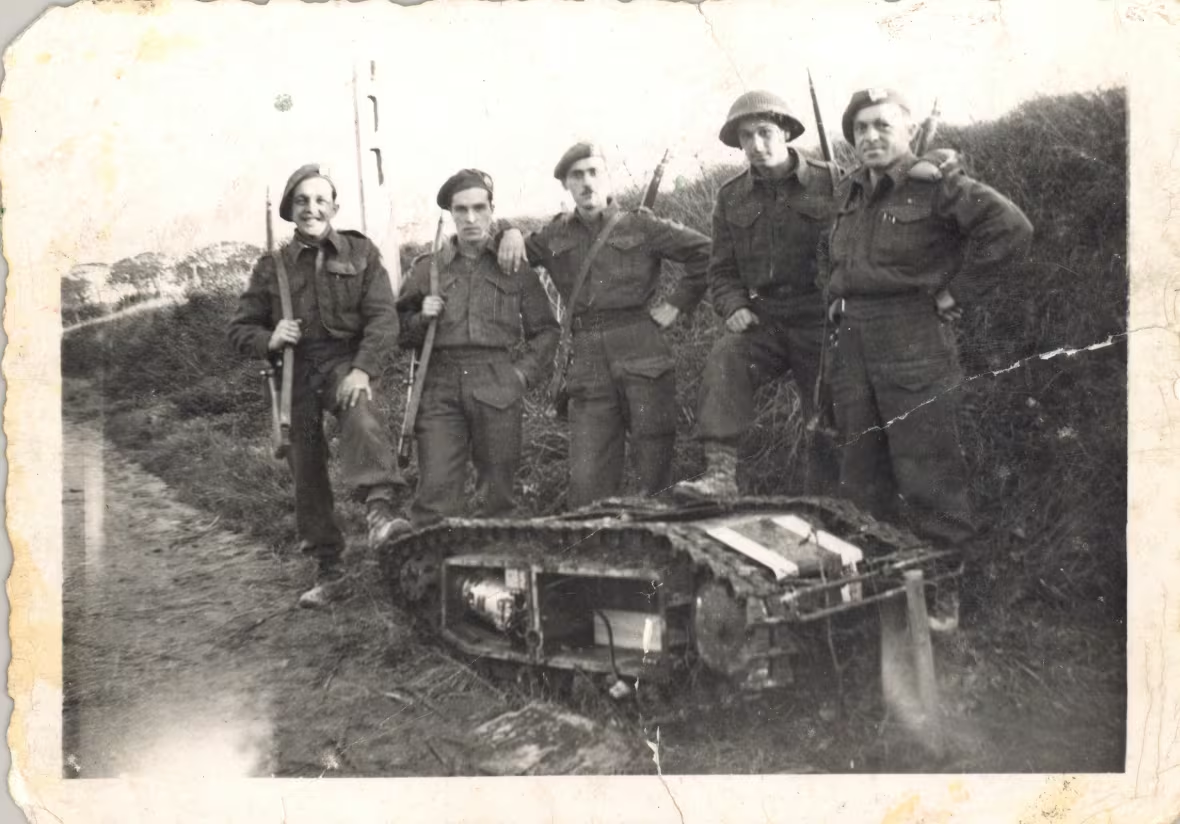In Ukraine, expect to see more ground drones on the battlefield to keep soldiers safe
Military aiming to 'scale up' use of unmanned ground vehicles on the battlefield
Ukraine has been throwing everything it can at Russia as its all-out invasion nears the three-year mark. The latest weapon in the military's arsenal? Ground drones.
Other types of drones have already proven critical to Ukraine during the war, and it has used them to take the fight to the enemy — along the front lines and beyond. Russia has likewise sent men and machines into the fray, wielding its own army of drones on Ukrainian soil.
Amid this fast-changing environment, Ukraine is now aiming to use ground drones — also known as unmanned ground vehicles, or UGVs — to help its military carry out key tasks and keep more of its soldiers safe.
Ukrainian Defence Minister Rustem Umerov says the military will "scale up" its UGV use for a variety of purposes, including supplying soldiers and transporting the wounded, as well as other tasks. This followed a forecast from Mykhailo Fedorov, the country's minister of digital transformation, that Ukraine needs to field tens of thousands of these tools this year.
"Ukrainians are certainly keen on using more and more of these, rather than soldiers," said Samuel Bendett, an advisor with the Russia Studies program at CNA, a research and analysis organization in Washington.
But Russia is also vying for a UGV-driven advantage and its forces are trying out a variety of new tools.
Experimentation in real time
Bendett said the UGVs rolling out in Ukraine have followed the same path the most widely used aerial drones have taken: They're tending toward cheaper, smaller models that can be built quickly, tested on the fly and easily replaced when destroyed.
"That's why Ukrainians are talking about tens of thousands of them [being unleashed]," said Bendett, pointing out that larger, more expansive ground systems are generally going to be harder to defend and more expensive to lose.
A high level of experimentation is being tolerated, he said, partially out of necessity for getting soldiers what they need on the front lines.
"It's a matter of life and death," said Bendett, who keeps a close watch on emerging drone models being used in Ukraine.
The urgency for soldiers to get their hands on these tools is the same on the Russian side.
Bendett said he's seen "lots of stories in the Russian media about soldiers fielding UGVs they built themselves."
A long time coming
"UGVs are hardly new," said Mick Ryan, a retired Australian army major general, pointing to the German use of devices called Goliaths during the Second World War. They were remote-controlled mines that were sent toward a position to be detonated.

"We saw these things at Normandy," said Ryan, a senior fellow for military affairs at the Lowy Institute's International Security Program in Australia.
Peter Samsonov, an author and creator of the Tank Archives blog, said via email that during that same era, the Soviets had a "tankette," which was like the Goliaths. And there were other weapons similar to what's rolling out on Ukraine's battlefield today, he said.
"Another precursor worth mentioning is the Soviet teletank, which was controlled remotely by radio rather than cables and was reusable," Samsonov said, noting these particular machines were complex to maintain and operate, so few were produced.
For more recent examples, Ryan points to robots used for bomb disposal tasks, during modern wars in the Middle East. But he says it wasn't until the current war in Ukraine that the broad potential for UGVs was recognized — after drones showed what they could do in the air and also at sea.
Ryan says their utility has been sharply demonstrated in the past year, with UGVs being used in "a really, really wide variety of missions."
"This isn't just killer robots — it's partially that, but they're in the minority at the moment."
CNA's Bendett agrees, noting that a lot of UGVs "are not used in actual combat, but used in supply roles."
But there are multiple media reports about a Ukrainian offensive in December, near Lyptsi, Ukraine, which reportedly involved a combination of UGVs and FPV drones.
Keeping soldiers safe
After three years of nationwide war, Ukraine remains under significant pressure: The U.S.-based Institute for the Study of War estimates that Russia controls roughly 112,307 square kilometres — or more than 18 per cent of Ukraine's territory — as of Thursday.
Ukraine is fighting against an opponent with a much larger population from which it can draft recruits, and Kyiv has been reluctant to mobilize its youngest adults to join the war. So those Ukrainians already engaged in the fight are considered highly important to the war effort.

Umerov, the defence minister, has said the wider use of ground drones is meant to spare Ukrainian soldiers from particularly dangerous duties.
"Our goal is to create a military where innovative technologies help perform the most dangerous tasks, saving the lives of our defenders," he said when announcing the plan to roll more unmanned systems onto the battlefield.
According to Ryan, it's the people behind these machines who will determine how much they can do.
"Frankly, the array of missions that we're going to see these things undertake will only be limited by the imagination of soldiers," he said.



